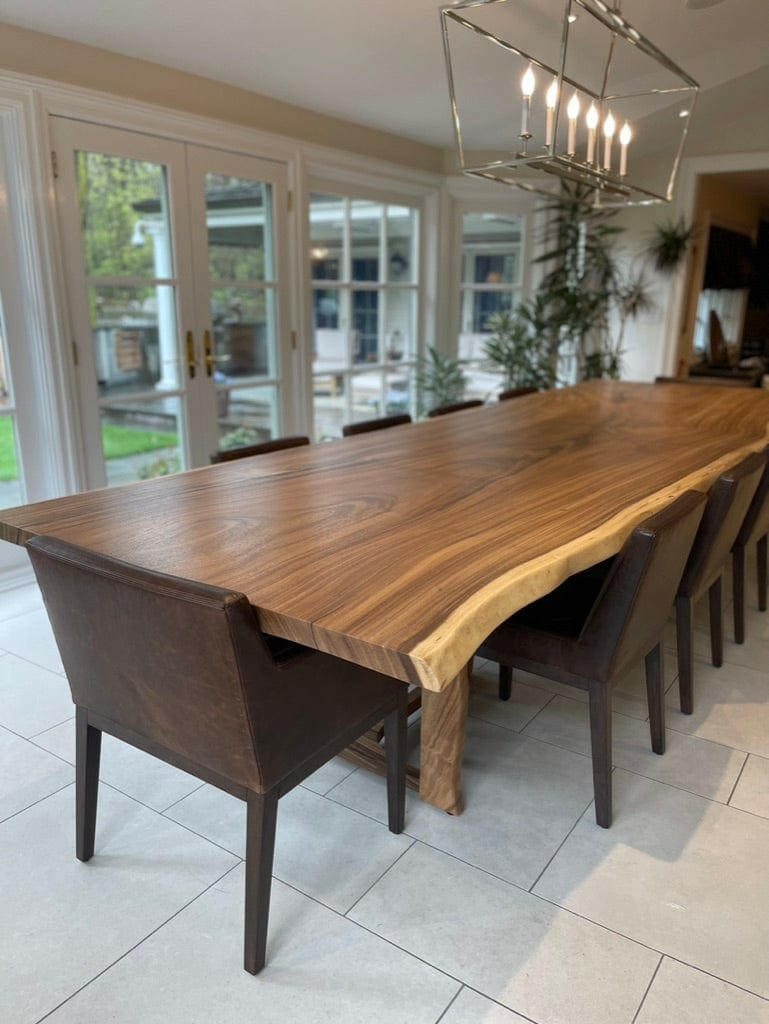Dining Room Table Legs: What to Consider Prior To You Get
Dining Room Table Legs: What to Consider Prior To You Get
Blog Article
A Comprehensive Take A Look At Table Leg Styles: Locating the Ideal Match
Picking the ideal eating table leg style is critical for both visual charm and useful capability. For those with bigger tables, trestle legs make sure tough support, whereas barrette legs present a mid-century modern vibe with their minimal design. The x-shaped legs mix modern design with improved stability.
Traditional 4 Legs
Among the numerous types of dining table leg styles, the traditional four-leg design stays an ageless choice for lots of houses. This timeless configuration provides a harmonious mix of performance and appearances, making it a seasonal fave. 4 legs give balanced assistance, guaranteeing the table continues to be stable and with the ability of birthing considerable weight. This is specifically beneficial for families that regularly organize large celebrations or utilize their table for several functions, such as work or crafting.
From an aesthetic viewpoint, the traditional four-leg design can be conveniently adapted to different indoor styles. Whether crafted from timber, metal, or a mix of products, these legs can be elaborately sculpted, streamlined and minimalistic, or anything in between. Their versatility allows them to match both rustic and modern setups effortlessly.
Moreover, the simple framework of the four-leg style assists in convenience of motion and placement within a room. Unlike more facility bases, this design reduces obstructions, offering enough legroom for diners. In recap, the conventional four-leg eating table leg style weds enduring beauty with sensible performance, making it an astute option for those looking for both kind and function in their eating furniture.
Pedestal Base
Commonly commemorated for its classy and space-efficient style, the stand base is a notable alternative to the standard four-leg configuration in table leg designs. This unique base typically features a single central column sustaining the tabletop, which can differ in kind, from ornately carved timber to smooth, contemporary steel. Among the key benefits of the pedestal base is its capacity to maximize legroom and seating versatility. Without edge legs, diners are paid for better liberty of movement, making it an ideal choice for round and oval tables that promote more intimate and comprehensive gatherings.
The main column itself offers a canvas for complex styles and imaginative expressions, including a component of aesthetic rate of interest below the table. In recap, the stand base integrates capability with style, making it a refined and useful option for varied dining atmospheres.
Trestle Legs
Trestle legs provide a robust and ageless structure for dining tables, identified by their straight cross-bracing and strong support light beams. Stemming from medieval times, this style has actually advanced yet kept its vital structure, making it a seasonal fave in both traditional and modern setups. The central trestle beam, frequently sustained by 2 or more vertical messages, uses remarkable security, permitting larger table sizes without the need for added legs.
A significant benefit of trestle leg tables is the adequate legroom they use. Unlike tables with 4 edge legs, the lack of obstructions at the table's sides gives unobstructed room for chairs and diners, improving visit this site right here comfort and availability. This makes trestle tables perfect for suiting bigger events, whether in a dining-room or a reception hall.
The visual flexibility of trestle legs is notable. Available in a selection of materials such as timber, metal, and composite, they can be completed to match a vast variety of indoor styles. From rustic farmhouse to streamlined modern designs, trestle legs can be customized to match individual preferences. Their long-lasting allure visit site and useful advantages make trestle legs an engaging selection for those seeking both style and practicality in their dining table.
Barrette Legs

The charm of barrette legs hinges on their simplicity and convenience - dining room table legs. Available in a series of materials, including steel and brass, they can be finished in numerous shades to enhance different interior styles. Whether coupled with a rustic wood tabletop or a contemporary glass surface, barrette legs easily blend performance with a touch of vintage appeal
Toughness is an additional remarkable feature of hairpin legs. Regardless of their fragile look, these legs are engineered to birth significant weight, making certain the eating table stays stable and secure. Additionally, they are relatively very easy to mount, making them a preferred option for do it yourself fanatics and specialist furnishings manufacturers alike.
X-Shaped Legs

Created from products such as steel, timber, or a combination of both, X-shaped legs can be tailored to match various design choices. Steel legs commonly provide a streamlined and industrial feeling, suitable for loft-style homes and modern-day eating areas. On the other hand, wooden X-shaped legs provide a warmer, extra rustic charm, ideal for farmhouse or eclectic interiors. The adaptability in materials enables property owners to tailor their table to better fit their total design plan.
In addition, the design behind X-shaped legs guarantees even weight distribution, minimizing the danger of wobbling and boosting durability. This makes them particularly fit for bigger table that call for added assistance. Essentially, X-shaped click here for more legs blend sensible engineering with modern-day appearances, making them a timeless option for diverse eating settings.
Conclusion
A comprehensive understanding of dining table leg styles discloses the distinctive features and benefits of each design. Trestle legs guarantee robust support for bigger tables, and hairpin legs introduce a mid-century modern visual.
Report this page